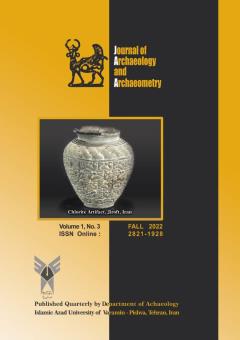Animal Subsistence of the Bronze Age in Tepe Taghiabad, Varamin plain, the Northern Central of Iranian Plateau
الموضوعات :Azadeh Ahmadipour 1 , Morteza Hessari 2 , Omid Zehtabvar 3
1 - Department of Archaeology, Tehran Central Branch, Islamic Azad University, Tehran, Iran
2 - Associate Professor of Iranian Center for Archaeological Research, Research Institute of Iranian Cultural Heritage and Tourism Organization, Tehran, Iran
3 - Department of Basic Sciences, Faculty of Veterinary Medicine, University of Tehran, Tehran, Iran
الکلمات المفتاحية: Iron age, Bronze Age, Animal Species, Subsistence,
ملخص المقالة :
Animal remains from Taghiabad in the Varamin plain are analyzed, conducted in 2018. This site is located north of Taghiabad and south of Ajorbast villages, Javadabad district in Varamin town. All the excavated bones are of animal origin, and no human bones have been retrieved. This site dates back to the Iron and Bronze ages; in this study, we deal with Bronze Age. Two hills were excavated, which are referred to as Taghiabad 1 and 2. Taghiabad 1 relates to the recent and middle Bronze Ages, containing ten loci (Seven loci of the Late and three loci of the Middle Bronze Age, respectively), and Taghiabad 2 contains three loci of the Late Bronze Age. Burning and cutmarks were found on some of the bones, which cutmarks might be secondary to butchery. This study is based on field, and lab studies on animals remain retrieved from these two hills (Taghiabad 1 and Taghiabad 2). Results show that sheep, goat, cattle, gazelle, equid, deer, and canine in Taghiabad 1 and sheep, cattle, gazelle, and small carnivorous in Taghiabad 2 are the most prevalent findings. The people’s primary sources of meat supplies were sheep, goats, and cattle.


